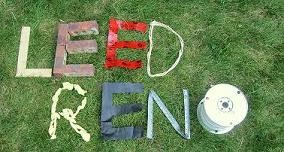However, there are a handful that are procedural. This includes "Sustainable Sites 1.1: Erosion Controls During Construction". It requires that a detailed erosion control strategy is put in place prior to disturbing any soil.
Most of us (living in North America anyways) have probably seen a new housing development going in. First step always seems to be to bulldoze everything living to the ground. Apart from the loss of vegetation this also means that all the plant life that was holding the soil in place is gone. Rainfall can then wash away the topsoil (the rich organic layer that is best for plant growth). This is bad for the local vegetation as the topsoil that took years if not decades to develop is lost leaving harsher conditions behind, But those tons of soil are going somewhere too; probably into a local stream, pond or even the municipal storm water management system. None of those places appreciate a huge sudden influx of dirt.
So LEED requires that all projects, Gut/Rehab or new development, have an erosion control strategy in place. This means protecting the existing top soil, and controlling the runoff and water entry points. It is a logical and valid prerequisite. What scares me is that there is no chance for a correction. You build a beautiful net-zero house that qualifies for LEED platinum but you (or your landscape professional) forget to put up a silt fence ... no certification.
 Up to now our erosion control strategy has consisted of "Retain all existing vegetation and all unpaved areas designated as non-disturbance zones." That worked fine until I needed to put in a larger basement bedroom window. The corresponding excavation (we had no existing window wells) disturbed the topsoil and the ridiculously rocky ground under it. My new erosion control strategy is to tarp the heck out of everything:
Up to now our erosion control strategy has consisted of "Retain all existing vegetation and all unpaved areas designated as non-disturbance zones." That worked fine until I needed to put in a larger basement bedroom window. The corresponding excavation (we had no existing window wells) disturbed the topsoil and the ridiculously rocky ground under it. My new erosion control strategy is to tarp the heck out of everything:- Topsoil: stockpiled and protected from disturbance (with two tarps)
- Clay and rocks: tarped
- Window well: sides tarped
- Waste concrete: tarped
So I may have gotten a little carried away, but my topsoil is protected and there is no water run-off carrying earth off my property.

No comments:
Post a Comment